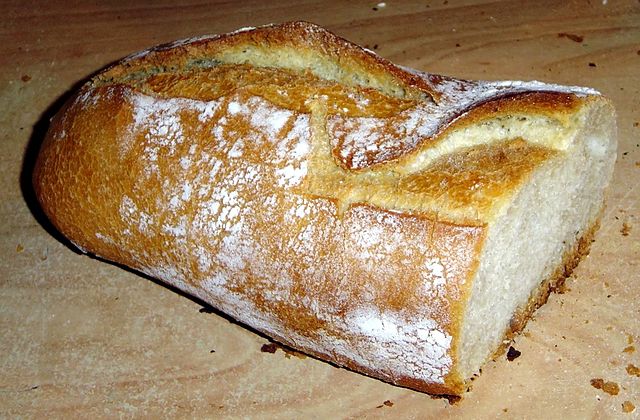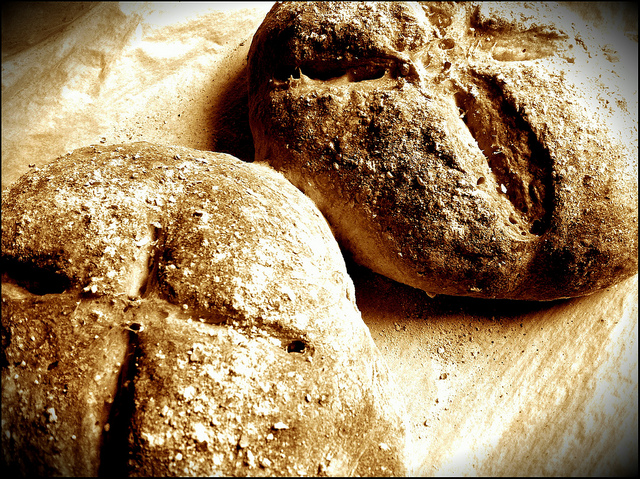Share the post "Grocery Shopping Tips: How to Select and Buy Bread"
If walking down the bread aisle feels like trying to decipher a calculus equation, we are here to help you with a little food nutrition guide 101. Perhaps a little more than a decade ago, you didn’t need to be an astrophysicist to bring home the bread literally. Now, just like the ways of earning a living has changed, you know earning some bread, buying bread has also changed. Nowadays, people are much more self-aware about the foods they choose to put in their bodies. The buzz word is choice. This article sheds some light on some healthy tips and smart shopping to help you keep some of those hard-earned dollars where they belong – your pockets. Shopping on a budget is a skill that can be mastered. Part math to fit your budget, and art to determine the best fit bread for yourself and your family’s needs. Learning how to spend less on groceries is a talent worth nurturing, after all, you have to grocery shop for life.
With catch phrases like “cracked”, “stone-ground”, “fiber” and “whole grain”, even when you understand basic nutrition, it can even test your limits to a certain degree. The average lay person just wants enough information to make a quick decision. They certainly don’t want to walk around the bread aisle with their “bread Thesaurus” handbook. If your ultimate goal is to just learn how to grocery shop better or personal goals – to lose weight or eat healthy in general – then just follow some basic fundamentals. Firstly, avoid processed foods like the plague especially those with extra-long ingredient lists that seem like they are hiding something amongst all the confusion or organized chaos. Instead, you should seek to purchase whole grains, fiber and wholesome flavor. If you find yourself lost because you choose a reasonable healthy sounding name but it ends up being a nutritional nightmare, we feel your pain. However to offer you some guidance in a world of bread buying confusion, here are some suggestions.
Understand your grain
We know there’s a plethora of food nutrition, healthy tips and smart shopping ideas online, however, we hope to delve a little deeper. Before you can buy bread like a professional chef on the Food Network, you need to take a little time to understand bread. It helps to know the basics of how bread is processed. Sometimes when you can simplify things to the lowest common denominator, various things start to make sense, then you can connect some dots and find the perfect formula that works for you and your family’s bread eating habits. Before processing occurs, a wheat kernel is a whole grain that contains all three, healthy parts of the kernel. The first is Bran – it makes up the outer layers of the grain comprising of B-vitamins, trace minerals and dietary fiber. It’s extracted when wheat flour is processed (in other words, refined) into white flour. The second essential part is the Germ which is important to sprout generating fresh plant sources. The Germ contains B-vitamins, trace minerals, and various types of protein. We all know how important protein is for the body. Furthermore, the Germ is also removed when wheat flour is refined to become white flour. Last but never least is the Endosperm, known as the inner part of the grain, it also provides a valuable source of protein and carbohydrates critical for producing energy. The endosperm also contains traces of vitamins and minerals to nourish your body. Consequently this is ultimately what remains, after flour is refined to become white flour. There you have it. That wasn’t so bad! When you learn to break things down in easy to digest chunks or more apropos in this case, easy to digest slices, then you can make your choices according to your personal taste choices. If you master the nuances of the most resourceful grocery shopping tips, you can enjoy healthy food with your family at a bargain. Smart shopping saves you a bundle. Shop smart and save big!
Reading between the lines
As required by law, the bread manufacturer must list the proper ingredients in descending order according to the weight considerations of the bread package. Therefore, the initial ingredients are the most first most prevalent ingredients in the overall package and down the line accordingly. In order to ensure that you are receiving 100% whole wheat bread, carefully examine the ingredients list—not the front of the package. “Whole wheat flour” or “100% whole wheat flour” should be the initial ingredient and the only flour highlighted. Be careful for deceptive practices to cause confusion like listing “wheat flour,” “unbleached wheat flour,” “multigrain,” “enriched,” or “stone-ground wheat flour.” These are simply sneaky attempts of phrasing refined white flour. Unfortunately, bread manufacturers are in the business of profits over healthy food as a top priority for its consumers. It behooves you to find your family’s trusted brand for bread, your kids can also benefit from learning how to shop smart. Start them young with food nutrition guidelines and healthy tips, it will pay huge dividends for a lifetime.
What does “Whole Grain” really mean?
The excessively used term “whole grain” is prevalent in numerous marketing ads and on displayed mightily on the front of food packages, not just for bread, but crackers and cereals as well. However, whole grain is not quite the same thing as whole wheat. When a label uses the words “whole grain,” investigate further to decipher what it really signifies.
- The product contains all three portions of the kernel (germ, bran and endosperm).
- The product contains 51% whole grain ingredients (or more) by weight per serving.
- The product contains 3 grams of fat (or less), 1 gram of saturated fat (or less), and 20 mg of cholesterol (or less) per serving.
To determine if your bread of choice is processed with a majority of whole grains, carefully examine the ingredients list. Find out whether “Whole Grain” should be a part of the first ingredient, such as: “whole wheat flour,” “whole grain rye flour,” or “whole grain pumpernickel flour.” You can also look out for the whole grain seal on the front package. Learning how to shop for bread is an important healthy living habit. Taking time to learn how to spend less on groceries or smart shopping in general frees up more money for other life’s necessities – taking algebra class all over again.
Share the post "Grocery Shopping Tips: How to Select and Buy Bread"









 EN
EN  RU
RU